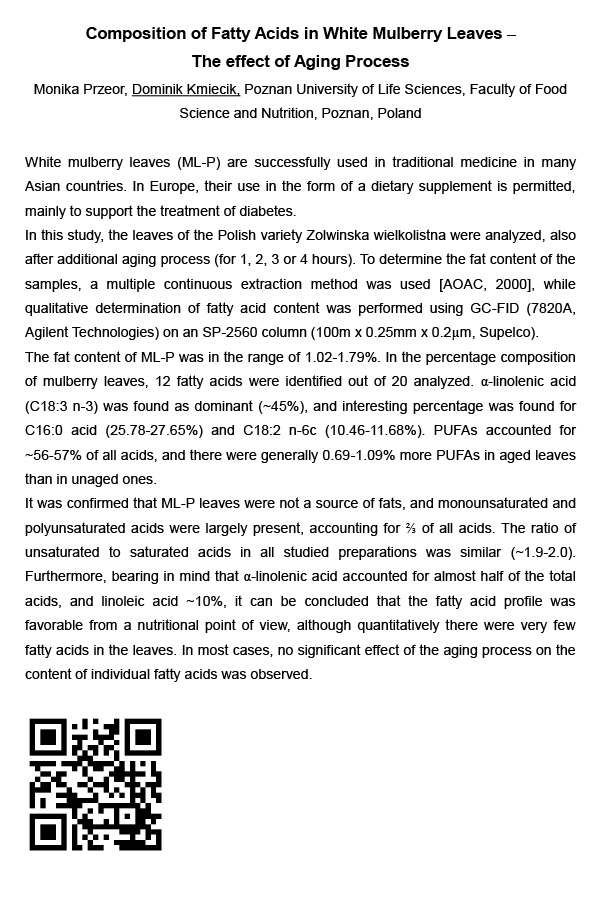White mulberry leaves (ML-P) are successfully used in traditional medicine in many Asian countries. In Europe, their use in the form of a dietary supplement is permitted, mainly to support the treatment of diabetes. In this study, the leaves of the Polish variety Zolwinska wielkolistna were analyzed, also after additional aging process (for 1, 2, 3 or 4 hours). To determine the fat content of the samples, a multiple continuous extraction method was used [AOAC, 2000], while qualitative determination of fatty acid content was performed using GC-FID (7820A, Agilent Technologies) on an SP-2560 column (100m x 0.25mm x 0.2µm, Supelco). The fat content of ML-P was in the range of 1.02-1.79%. In the percentage composition of mulberry leaves, 12 fatty acids were identified out of 20 analyzed. α-linolenic acid (C18:3 n-3) was found as dominant (~45%), and interesting percentage was found for C16:0 acid (25.78-27.65%) and C18:2 n-6c (10.46-11.68%). PUFAs accounted for ~56-57% of all acids, and there were generally 0.69-1.09% more PUFAs in aged leaves than in unaged ones. It was confirmed that ML-P leaves were not a source of fats, and monounsaturated and polyunsaturated acids were largely present, accounting for ⅔ of all acids. The ratio of unsaturated to saturated acids in all studied preparations was similar (~1.9-2.0). Furthermore, bearing in mind that α-linolenic acid accounted for almost half of the total acids, and linoleic acid ~10%, it can be concluded that the fatty acid profile was favorable from a nutritional point of view, although quantitatively there were very few fatty acids in the leaves. In most cases, no significant effect of the aging process on the content of individual fatty acids was observed.
